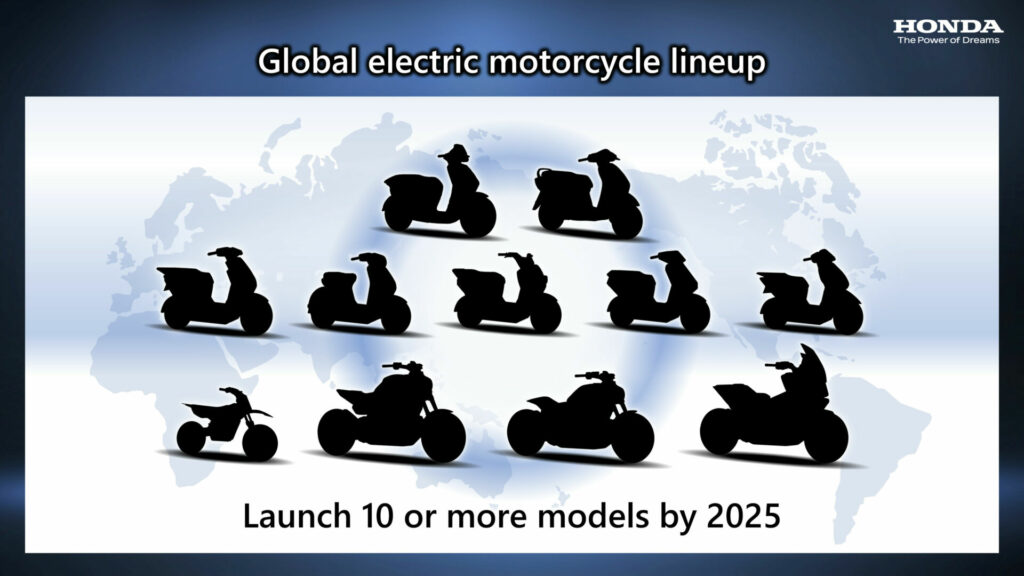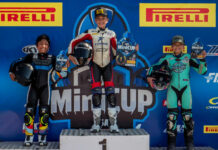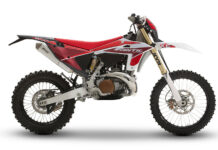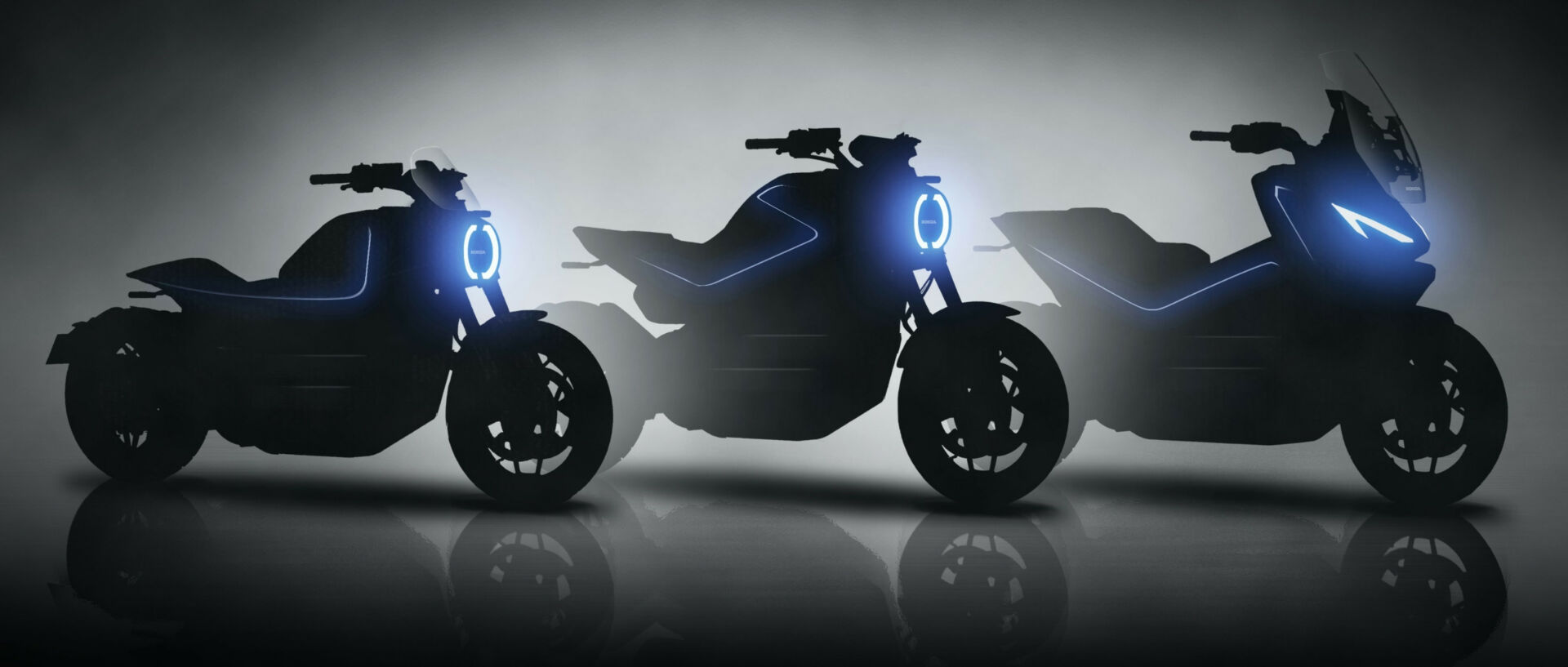Summary of Briefing on Honda Motorcycle Business
– Realizing Carbon Neutrality with a Primary Focus on Electrification –
September 13, 2022
Striving to realize carbon neutrality for all of its motorcycle products during the 2040s, as the primary focus of environmental strategies for motorcycle business, Honda will accelerate electrification of its motorcycle models, while also continuing to advance ICE (internal combustion engines).
Honda plans to introduce 10 or more electric motorcycle models globally by 2025 and aims to increase annual sales of electric models to 1 million units within the next five years, and 3.5 million units (equivalent to 15% of total unit sales) as of 2030.

As the world’s largest motorcycle manufacturer, Honda will continue to lead the industry in this “era of carbon neutrality” by continuing to offer the “joy of riding” with its electric motorcycles and by offering products with new value by leveraging the high level of compatibility of software technology and electrified models.
Honda aims to realize carbon neutrality for all products and corporate activities Honda is involved in by 2050. Today, Honda held a press briefing regarding its motorcycle business initiatives, presented by Kohei Takeuchi (Director, Executive Vice President and Representative Executive Officer) and Yoshishige Nomura (Managing Officer).
A summary of the briefing follows:
1. Approach toward carbon neutrality of motorcycle products
To accommodate a variety of uses and needs of customers around the world, Honda offers a wide range of motorcycle products, from small commuter models to large fun models, which are used globally in both emerging and advanced countries. In emerging nations, especially, there is high demand for motorcycles, mainly commuter models, as a lifeline of people in their everyday life; however, popularization of electric models faces challenges such as heavier vehicle weight and higher prices. Also, demand for electric models depends largely on government incentives, regulations and availability of charging infrastructure in each respective market.
Considering these circumstances, Honda will accelerate the electrification of motorcycles as the primary focus of environmental strategies for motorcycle business, while also continuing to advance ICE, aiming to achieve carbon neutrality for all of its motorcycle products during the 2040s. Moreover, Honda will continue to lead the industry at the forefront of its environmental initiatives.
<Continued Initiatives to Advance ICE>
In order to realize carbon neutrality while accommodating the wide range of customer needs and usage environments unique to motorcycles, Honda continues its initiatives to reduce CO2 emissions from ICE models, while also developing models compatible with carbon neutral fuels such as gasoline-ethanol blends. To be more specific, in addition to Brazil where flex-fuel (E100)*1 motorcycle models are already available, Honda plans to introduce flex-fuel models in India, as well, one of the major motorcycle markets. The plan is to first introduce flex-fuel (E20) *1 models beginning in 2023, and flex-fuel (E100) models in 2025.
2. Electrification Initiatives
<Introducing electric motorcycle models to meet wide-ranging customer needs>
Anticipating market expansion, Honda will introduce electric motorcycles that accommodate a wide range of customer needs. Commuter models and fun models combined, Honda will introduce more than 10 new electric motorcycle models by 2025, with an aim to reach annual electric motorcycle sales of 1 million units within the next five years, and 3.5 million units (approximately 15% of total sales) as of 2030.
Details of product launch plans follow:
(1) Commuter EVs
As businesses are becoming more environmentally conscious, demand for business-use electric motorcycle models has been on the rise in recent years. To fulfill such demand, Honda has been offering the Honda e: Business Bike series models and accelerating the global launch of business-use electric motorcycles. In addition to providing a Honda e: Business Bike series model to Japan Post and Vietnam Post Corporation*2 for mail delivery, Honda is currently conducting joint trials with Thailand Post Company Limited*3, and planning to begin production and sales of the Benly e: in Thailand before the end of this month. These Honda e: Business Bike series models are equipped with Honda Mobile Power Pack (MPP) swappable batteries, which are well-suited to business use such as the delivery of small packages and resolve issues of range and charging time, which are key challenges that need to be addressed to realize widespread use of electric motorcycles.
For personal use, Honda plans to introduce two commuter EV models between 2024 and 2025 in Asia, Europe and Japan. Envisioning the future market environment, uses and technological advancements, Honda is exploring a range of future personal-use models including ones equipped with a power source besides swappable batteries.
(2) Commuter EMs*4 / EBs*5
Currently, EMs and EBs account for more than 90% of industry-wide global electric motorcycle unit sales (approximately 50 million units). In China, the world’s largest electric motorcycle market, EMs/EBs are widely adopted as a convenient form of everyday mobility, and Honda has been offering such products by leveraging its local supplier infrastructure and development/manufacturing operations. With the expectation that demand for EMs/EBs will be expanding globally, Honda plans to introduce a total of five compact and affordable EM and EB models between now and 2024 in Asia, Europe and Japan, in addition to China.
(3) FUN EVs
In addition to commuter EVs, Honda is actively developing electrified models in the “FUN” category. Based on its FUN EV platform currently under development, Honda plans to introduce a total of three large-size FUN EV models in Japan, the U.S and Europe between 2024 and 2025. Honda will also introduce Kids Fun EV model, designed to pass on the joy of riding to the next generation.
<High-efficiency “Monozukuri” that enables expansion of the electric model lineup and sales>
Based on its competitive “Monozukuri” (art of making things) know-how, amassed through the development and application of platforms for ICE-powered models, Honda will develop and apply electric motorcycle platforms that combine the three core components for electric vehicles – the battery, PCU and motor– with the motorcycle body.. By fulfilling customer needs with highly efficient Monozukuri, Honda will continue to offer the joy of mobility with affordably-priced electric motorcycle models.
Regarding the battery, a core component of electric vehicles, Honda aims to equip its electric motorcycle models with an all-solid-state battery Honda is currently developing by making active use of its own resources.
3. Smoother and Smarter Use of Electric Motorcycles
<Initiatives to enhance charging infrastructure and standardize batteries>
Enhancement of charging infrastructure and standardization of battery specifications are vital for the widespread adoption of electric motorcycles. As part of the enhancement of charging infrastructure, Honda is working toward popularization of battery sharing.
(1) Popularization of battery sharing
Honda has established a joint venture in Indonesia, one of the major motorcycle markets, to operate a battery sharing service utilizing MPPs and MPP-powered motorcycles. The JV is currently operating a battery sharing service in Bali.
In India, Honda is planning to begin its battery sharing service for electric tricycle taxis (so-called “rickshaws”) by the end of this year. Honda is also planning to expand its initiatives to popularize battery sharing to other Asian nations.
In Japan, in April of this year, ENEOS Holdings, Inc. and the four major Japanese motorcycle manufacturers*6 jointly incorporated Gachaco, Inc., which will provide a sharing service of standardized swappable batteries for electric motorcycles and develop infrastructure for this service. The company plans to begin its motorcycle battery sharing service this fall.
(2) Standardization of batteries
In Japan, four major Japanese motorcycle manufacturers have agreed on common specifications for swappable batteries based on the JASO TP21003*7 guideline.
Honda is working toward the standardization of swappable batteries while participating in a battery consortium in Europe*8 and working with a partner company in India.
<Strengthening of the areas of software technologies>
To increase the added value of its electric motorcycles, Honda is aiming to transform its business from a focus on non-recurring hardware (product) sales business to a recurring business model combining hardware and software.
In the area of software development, Honda is working with its software subsidiary, Drivemode*9, to enhance new value creation for its electric motorcycle products in the connected realm. Starting with the commuter EV model scheduled to go on sale in 2024, Honda will offer user experience (UX) features that continuously enrich the quality of riding through connectivity, such as offering optimal route options that take into consideration remaining range, charging spot notification, safe riding coaching and after-sales service support.
Looking ahead, Honda will work toward the establishment of a connected platform where greater value will be generated not only by connecting its motorcycles, but by linking a wide range of Honda products and realizing connectivity beyond their product domains.
*1 Gasoline-ethanol blend fuel. Various blend rates are available, from 100% gasoline to 100% ethanol. E100 is 100% ethanol, while E20 is 20% ethanol.
*2 Vietnamese postal service
*3 Thailand postal service
*4 Electric Moped category. Maximum speed: 25km/h – 50km/h
*5 Electric Bicycle category, not including electric-assisted bicycles. Maximum speed: 25km/h or lower.
*6 Honda, Kawasaki Motors, Ltd., Suzuki Motor Corporation and Yamaha Motor Co., Ltd.
*7 The Society of Automotive Engineers of Japan, Inc. Organization (JASO) technical paper TP21003, the “Guideline For Swappable Batteries Of Electric Two Wheel Vehicles”
*8 Swappable Batteries Motorcycle Consortium (SBMC) established for the purpose of achieving widespread adoption of electric motorcycles and other small-sized electric mobility products.
*9 A developer of software that transforms UX for mobility. Drivemode builds smarter, safer, connected driving technology for everyone on the road.







